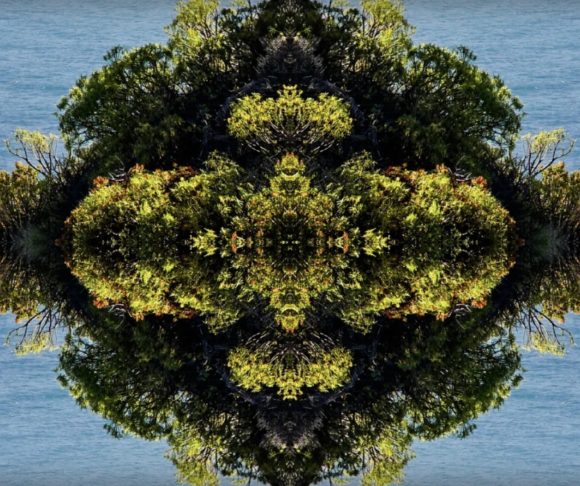In the midst of chaotic life, there is a hidden meaning. More precisely: chaotic life is represented by the anima pattern, and sustained engagement with that archetype leads to the discovery of such meaning.
Setzt [der Menschenverstand] sich mit der Anima auseinander, so gibt ihm ihre chaotische Willkür Anlaß, geheime Ordnung zu ahnen.
When [the human mind] engages with the anima, her chaotic wilfulness prompts it to sense a secret orderliness.
GW IX/I, §66.
To “engage with the anima” is a shorthand phrase for the process we have just discussed: first, recognizing some unconscious elements of one’s psyche as conforming to the archetypal pattern (e.g. fantasies or projections), and secondly, gaining some conscious control over them (by both understanding and feeling them consciously, i.e. both intellectually and emotionally). With that second step, the unconscious occurrences become psychological functions which can be directed by the will. (Something like a social intuition, a kind of immaterial perception, which may employed in ways similar to ordinary sense perceptions.)

(This continues an earlier line of thought, started here and continued here.)
5. But this is risky. The danger lies in mistaking this process of integration for a victory of consciousness over the unconscious.
It is easy to construe the engagement of an individual subject with the anima archetype in these terms: since the person may be possessed, overpowered by the unconscious drives (unbidden fantasies, uncontrollable behaviors, …), the immediate goal may well be formulated as “breaking the power” of, or “overcoming” the possession by, the unconscious. (In fact, these are the very words Jung himself often employs.) But this is misleading language: there will always be a significant unconscious layer to our psychologies, and there is no question of consciousness entirely subordinating (or even dissolving) the unconscious. Even a specific archetype, such as the anima, can neither be overpowered nor eliminated. As we have already clarified, at most certain contents produced by any given archetype can be transformed from being unconscious (as fantasies, projections, behaviors, …) to being conscious (as psychological functions). The archetype itself never changes or vanishes.
Consequently, Jung says:
Die Auseinandersetzung aber war nicht ein Sieg des Bewußtseins über das Unbewußte, sondern die Herstellung eines Gleichgewichtes zwischen den beiden Welten.
The engagement was not a victory of consciousness over the unconscious, but rather the creation of a balance between these two worlds.
GW VII, §381.
Such an error is what Jung frequently calls “inflation” of the ego: the subjective consciousness (ego) takes itself to be a conquering force that has subdued an unconscious archetype (see, e.g. GW VII, §§227ff., §380).
Yet this mis-identification of “creating a balance” with a “victory” or an “overpowering” of the anima archetype is not a mistake a person makes deliberately. We fall into such an error — in other words, making that mistake is itself an unconscious process. And as an unconscious process, the “inflation” mistake probably follows some pattern, that is, it conforms to an archeytpe.
Which archetype? In this case — after engaging successfully with the anima and integrating some of her contents as psychological functions — it is the archetype of spirit, aka the Sorcerer, Wise Old Man, and the like (GW VII, §§377-379; IX/I, §74). That, precisely, is the archetype of extracting, from the chaotic unconscious, a hidden meaning. Beforehand, it had “hidden inside the meaning-pregnant chaos of the anima” (GW IX/I, §66), but now it “emerges out of the dark background and takes possession of the conscious personality” (GW VII, §378).
And in this way, when we manage to integrate the contents from the anima archetype but fail to recognize this as merely a balancing-out, we run risk to now become possessed by the spirit archetype, which inflates the ego and leads it to believe in itself as an all-powerful mage, the epitome of wisdom itself.




[…] a person successfully engages with the anima, they may misunderstand their success as a conscious “victory” over an unconscious archetype. In reality, they are just being […]